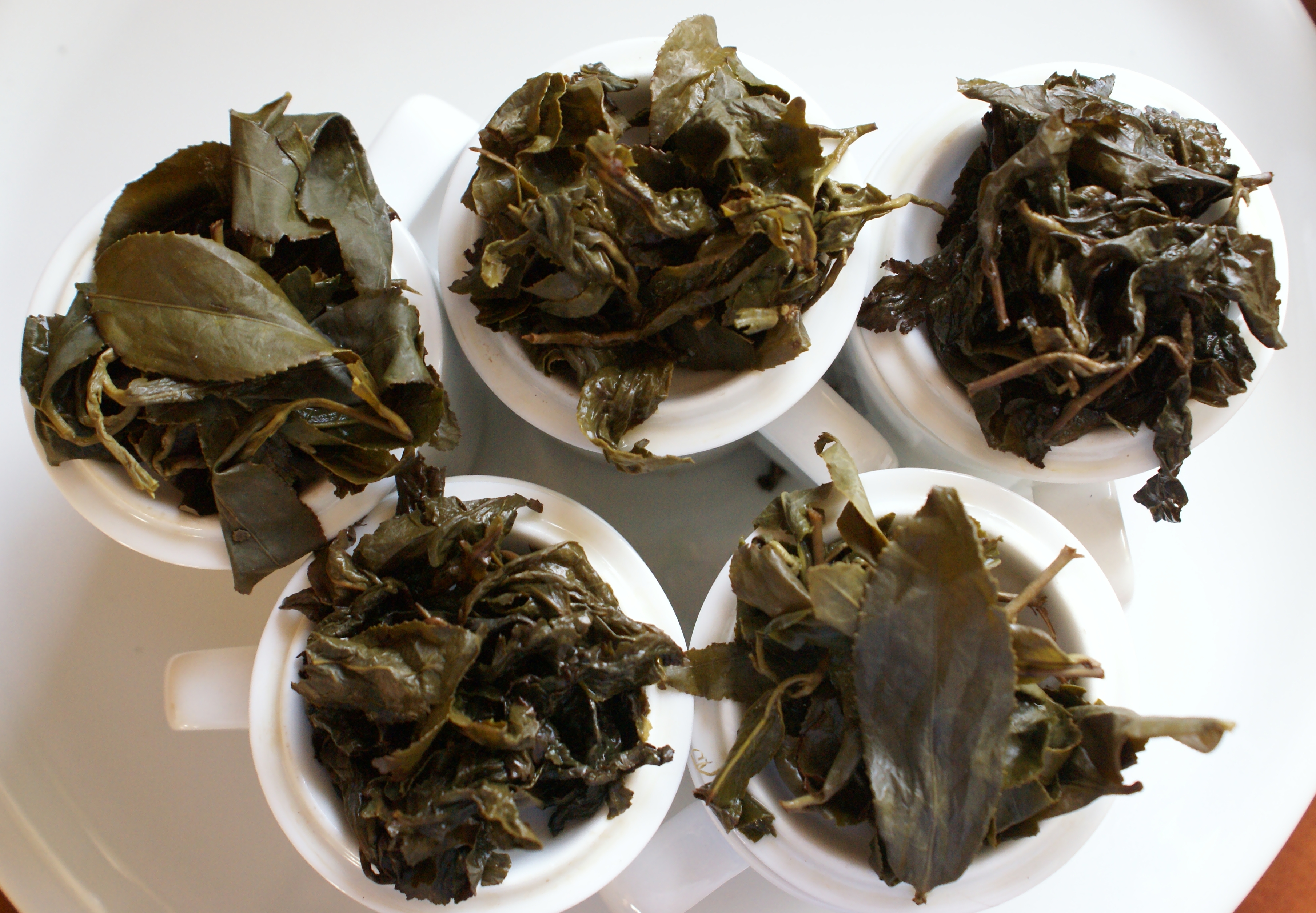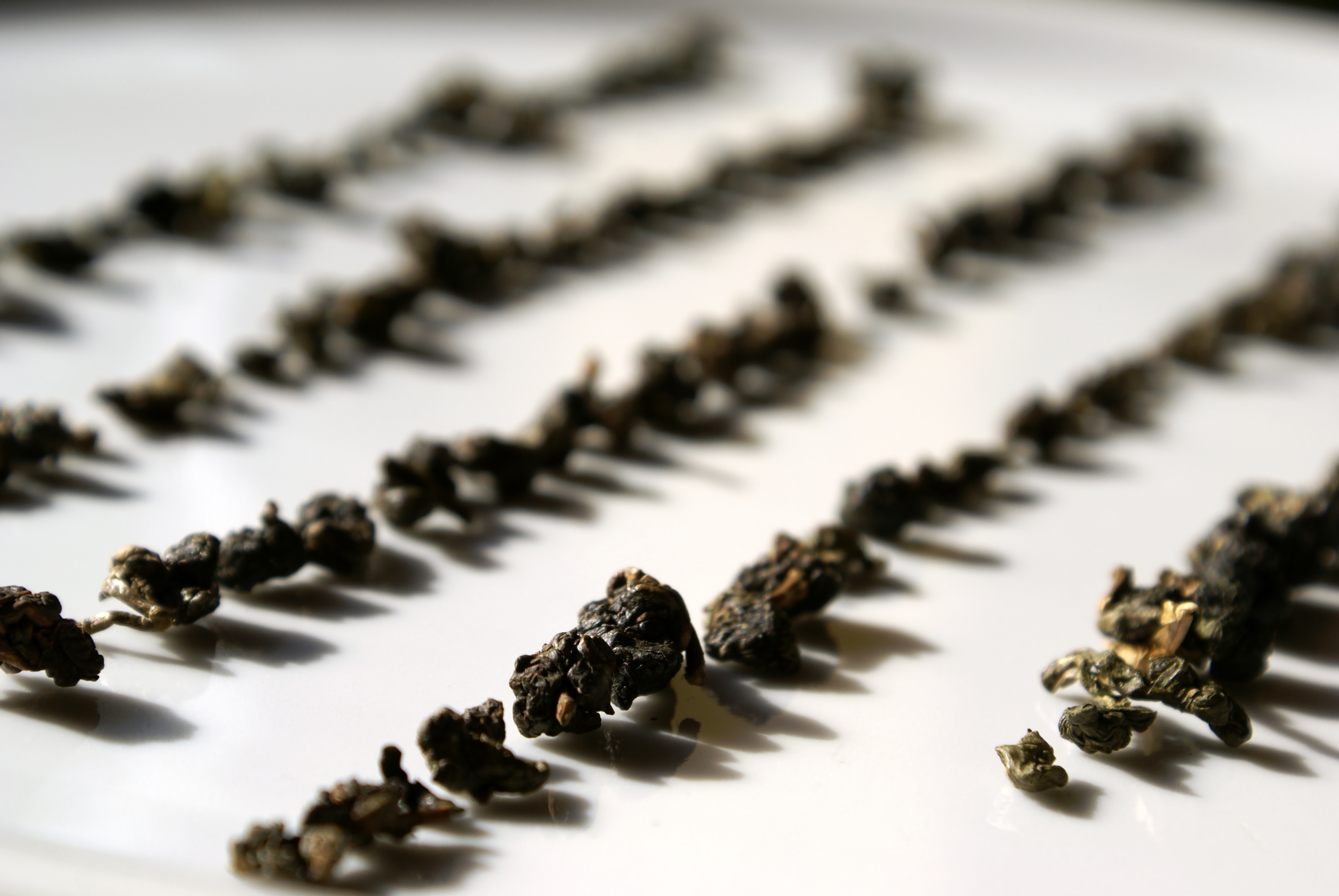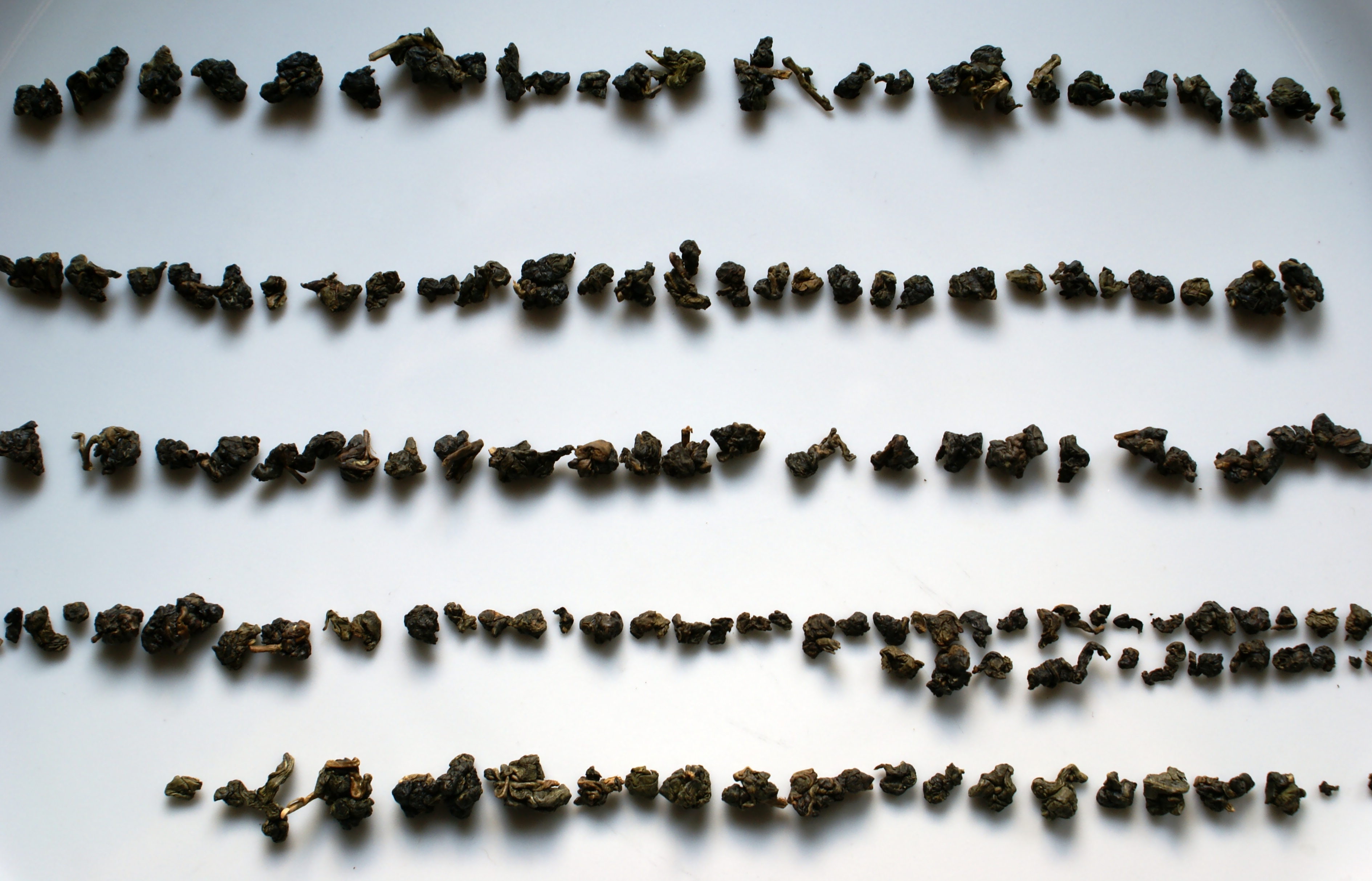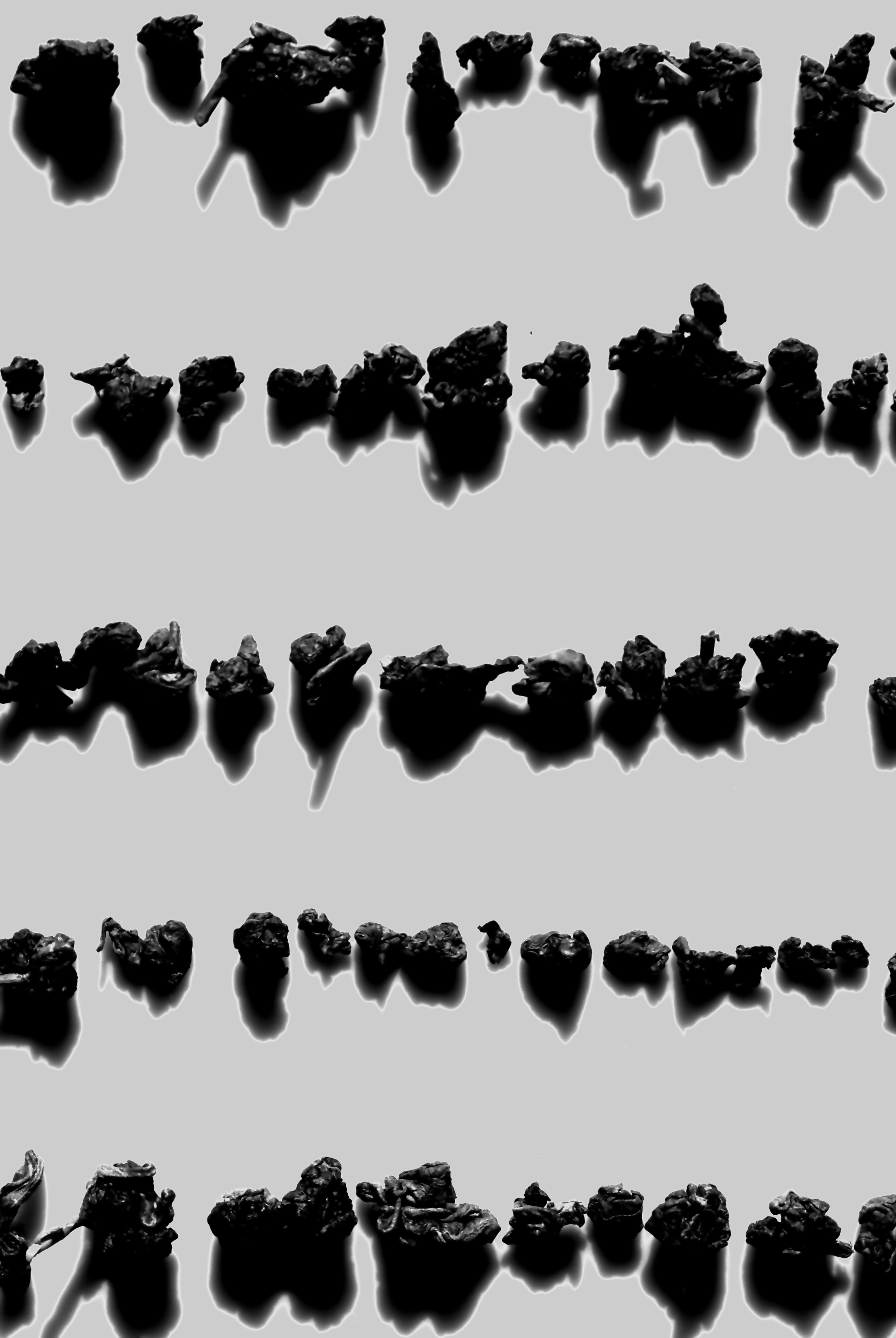Lao Ming x 2011 x 3
Posted on 23 August 2011
Part 2 of my exploration of the teas of Lao Ming, renowned Taiwanese tea blender and roaster. I haven’t been particularly thrilled by three 2010s I reviewed here. Today’s three 2011s are far better. For a broader perspective, I brewed them alongside the unidentified 2010 Dongding that was my first, very positive contact with Lao Ming, as well as dregs of a 2008 unroasted Shanlinshi from Teamasters.
You’d expect the latter to be stale, but it isn’t, although there’s a leafy, lettucey, vegetal edge to the clean mountain tea profile that indicates this tea is a little past prime. Still, for an unroasted green oolong, three years’ ageing is a pretty good performance, and it provides a good control tea for this comparative tasting.
It’s the first Lao Ming 2011, coded CS1, that comes closest to this. It’s an unroasted (or very slightly roasted) tea that resembles a green in its clean, juicy profile, but is denser and longer. There is a subdued but attractive bouquet of spring flowers, indicating that the tea is younger than the 2008 described above. I like this one, although when rebrewed it deteriorates quickly, and when compared to the two below, it definitely lacks the depth and persistence of flavour. Lao Ming says it’s a standard tea, fresh and clear.

Clockwise from top left: Lao Ming’s 2011 CS1, CS2, MS1, Teamasters’ 2008 Shanlinshi, Lao Ming’s 2010.
Looking at the above picture, it’s clear than the teas #1 and 5 are unroasted (leaves open up fully) while #2, 3 and 4 exhibit a varying degree of roast. #4 is the other control sample, Lao Ming’s 2010. It’s good, with a calm cerealy medium roast, although it lacked some brilliance and balance in this session. (But it’s been a 3g sample kept in a paper bag for the last 10 months, which isn’t ideal). Roast-wise this 2010 falls somewhere between the two 2011. #2 (codename CS2) is just a little lighter, though essentially in the same style: toasted grains and cereals, baked bread but none of the cappuccino & chocolate high roast I found obtrusive in Lao Ming’s ZH-1121. Additionally this tea has very lovely length of flavour and a delicate buttery, almost vanillish texture (not unlike an oaked wine: see my development of this comparison here). I really enjoyed it, and although less impressive at first sight than the below tea, it really grows on you.
The third tea is coded MS1 and Lao Ming describes it as high quality, very best, sweet perfume, more roasted. More roasted it is indeed, but nowhere at the level of those controversial 2010s: a balanced medium roast adding a layer of toasted depth. It’s a bone-dry tea that is likely to improve over five or six years, although today it lacks the charm of the CS2. But it’s clean and balanced, and it’s actually compared to the 2010 Lao Ming that this balance becomes impressively obvious.
In summary, three very good teas, offered at reasonable prices ranging from TWD2,000 (48€) for 300g of the CS1 to TWD (120€) for the MS1. All come from the same tea appellation of Dongding, so the differences really are just the result of leaf selection and manufacture (roast). Confirming Lao Ming’s sheer class as teamaker.
Disclosure
Source of teas: Lao Ming’s 2010 and 2011s, gift from a tea friend (who purchased them from the producer); Teamasters’ 2008, own purchase.




